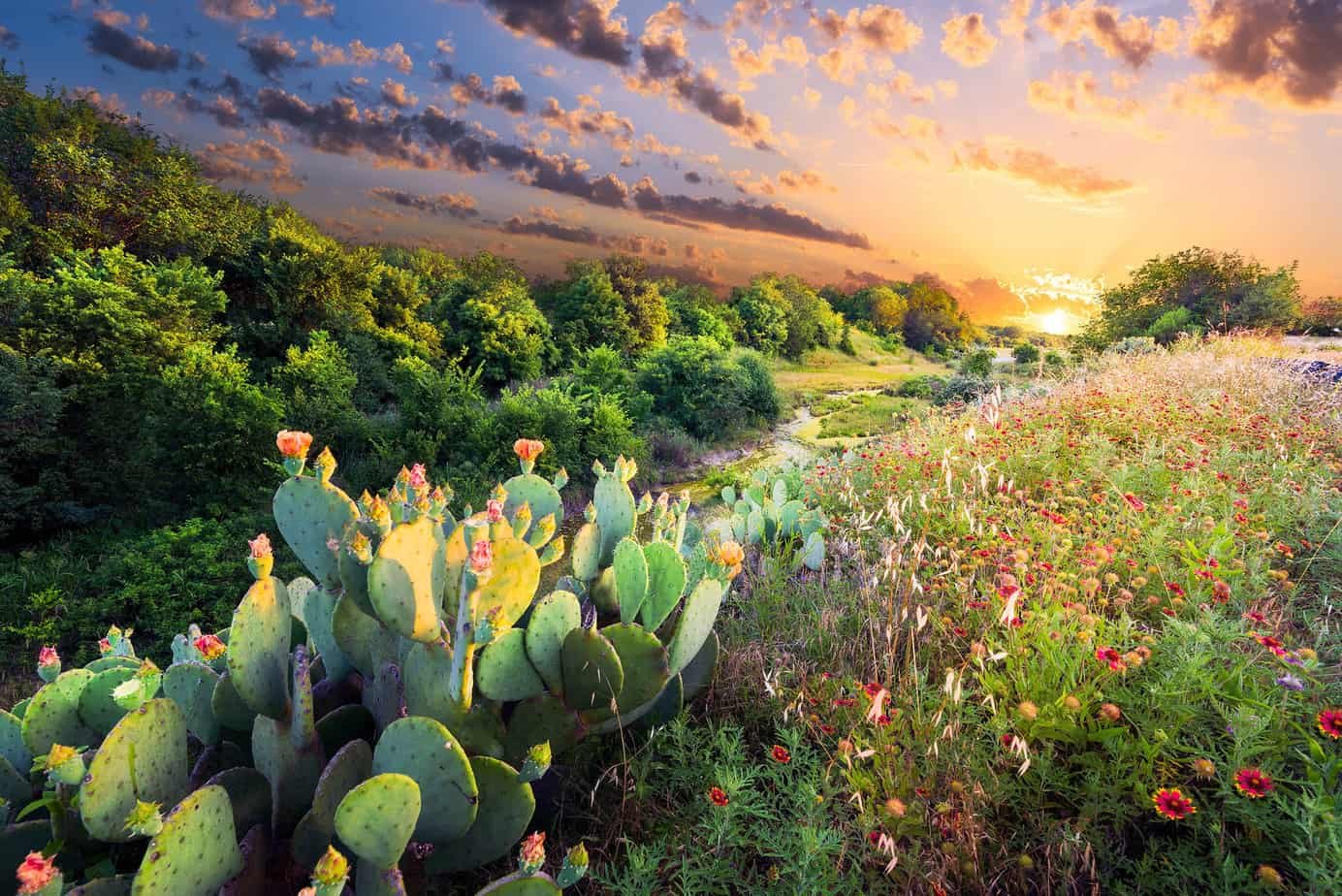Texas is a large state with diverse terrain. It has an abundance of native Texas plants that adapt to the various regions of Texas. You can have that lush green space you are accustomed to while conserving water.
Please find out more about Texini, the leading Texas lifestyle brand defined by its celebration of the Lone Star State’s culture, heritage, and values.
Xeriscaping conserves water with the use of low-water plants that require little or no irrigation. Using native, drought-resistant plantings and implementing a practical terrain for your yard conserves water, reduces maintenance, and may even add to your property value.
Walkways for high-traffic areas and ground cover for other areas can be combined with other landscape elements such as staggering rock formations, gravel, mulch, or hardscaping.
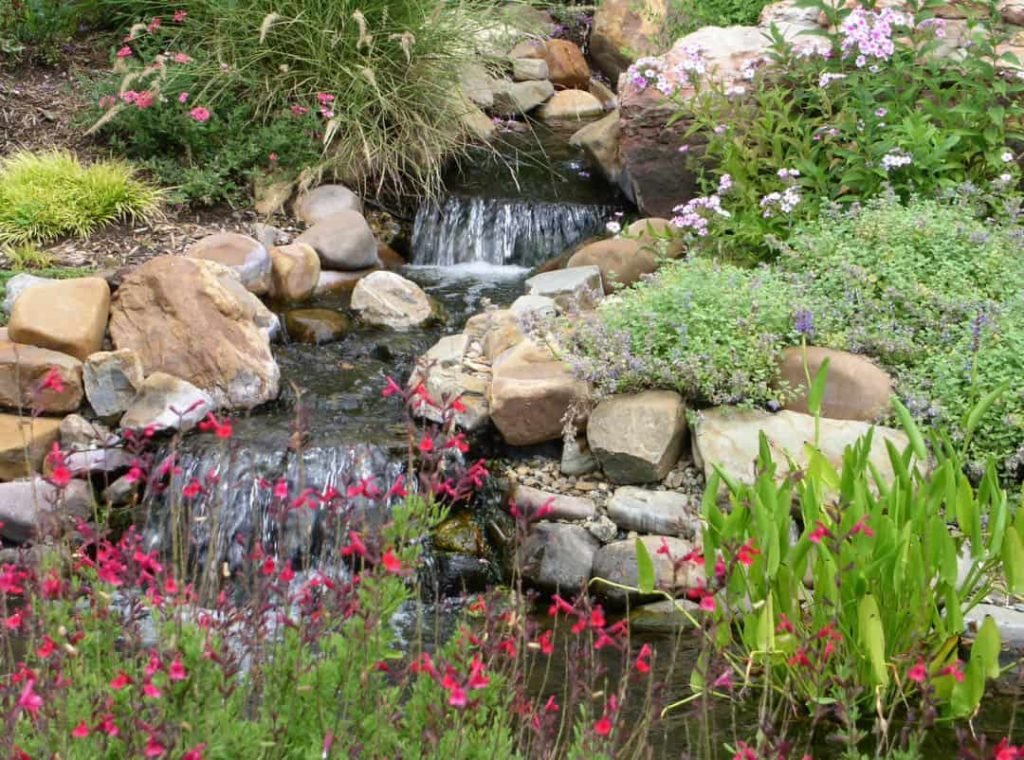
Xeriscaping Conserves Water
Look to nature at different natural wild flora settings, rock formations, hills, valleys, and slopes from various areas. Take photos when possible, for reference. Then consider the various landscapes from the different terrains that appeal to you and make a xeriscape design plan.
Advertisement

Imagine finding this in your garden. Check it out here.
When planning your xeriscape take the time to make a drawing showing existing driveways and other hardscapes that will remain fixed, including any yard areas that need xeriscaping. Follow up by adding any existing landscape items and existing plants that you plan to keep. This is your basic template.
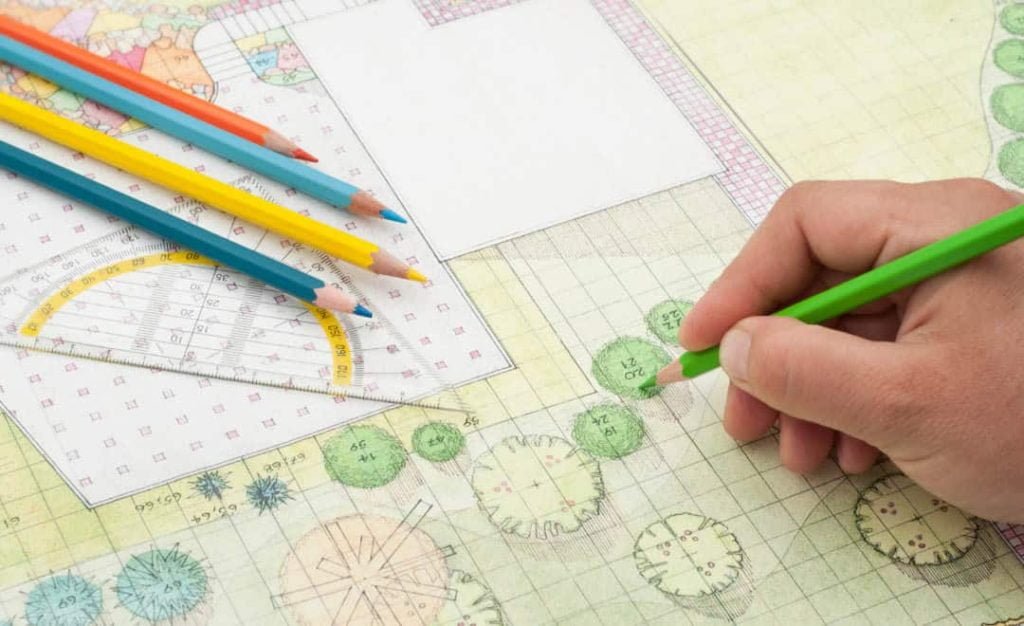
Note places where other items such as barbecue pits, benches, and pathways will be placed. If you are implementing areas with grass, determine those first. Make note of any areas that will get heavy foot traffic for possible walkway placement. Also, make note of sunny and shady areas for correct plant placement.
Native plants are by far the best xeriscape plants. They will be hardy and easy to upkeep. As a native plant, they will provide cover for birds and other animals such as squirrels, lizards, toads, and insects as well as help to stabilize the soil. Other hardy plants that will complement your landscape design should be considered when needed.
Determine any plantings that should be in higher terrain areas as well as low areas. The lower the plantings are placed, the more water they will retain. Separate your plants regarding shade and sun tolerance. Taller plants in most cases should be farther away with shorter plants being in the forefront for aesthetic purposes.
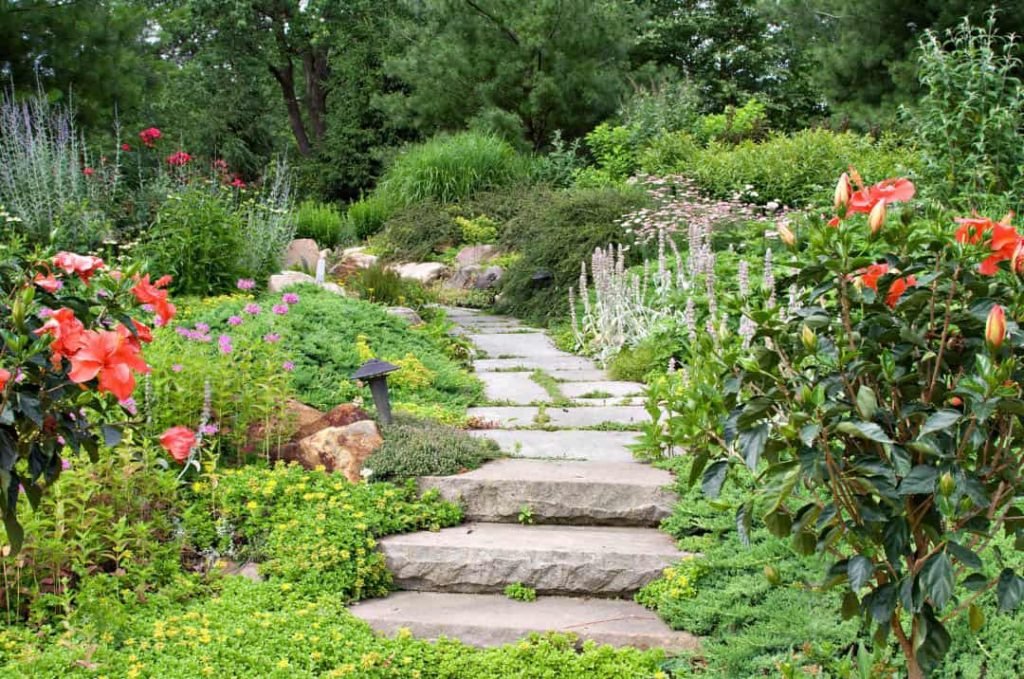
Before planting you will need to determine what type of soil you are working with. Xeriscaping does best with silt heavy soil in combination with clay and sand. Most soils are a combination of sand, clay, and silt, creating a loam. A higher percentage of silt soil is considered the best medium for xeriscape plants. You may need to amend your soil before planting.
A soil test is a preferred method to determine soil content. However, if you have a knowledgeable neighbor or a family member, they may be able to help you with the soil determination. Silt soil is light, dry, and airy similar to a powder sometimes known as rock flour. It is finer than sand and is considered complex soil.
Some proven methods of amending clay or otherwise unhealthy soil matter are to add composted manure, composted vegetable matter, ground-aged pine bark, or a commercial soil conditioner. Perlite and gypsum will improve the aeration and drainage of your soil.
During the initial stages of xeriscaping, your plants may need more water until the roots are well established. During the first season monitor water use regularly. Once established they should use much less water than a typical landscape.
Finally, mulch should be incorporated where it makes sense to prevent evaporation and keep the root system cool. Regular maintenance should be used as with any other type of yard or garden, pruning, and weeding when necessary.
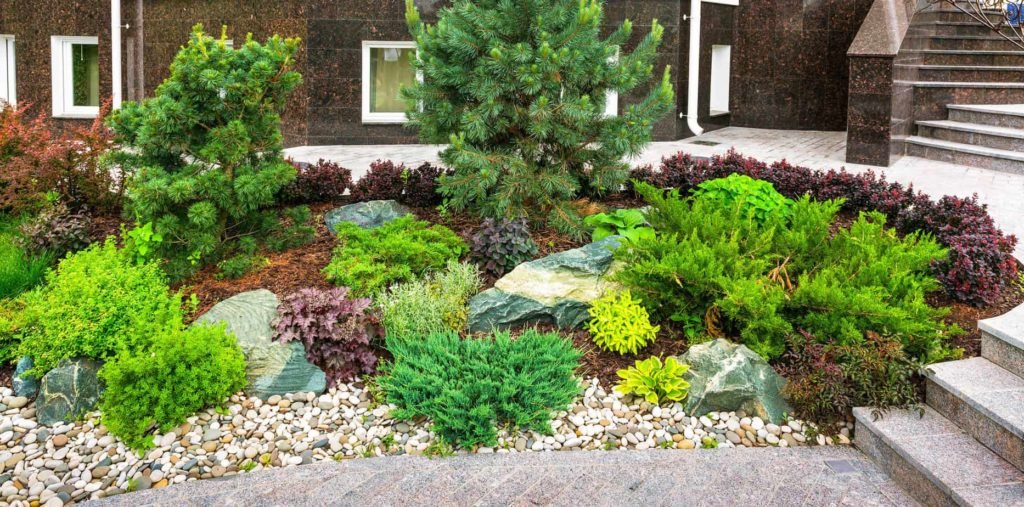
Texas Native Plants and Other Xeriscape-Friendly Plants
Native grass that does well in all regions of Texas is Buffalo grass. It is drought tolerant and cold hardy. Buffalo grass is a low-maintenance sod-forming grass. It goes dormant in the winter coming back to its green glory in the spring. Buffalo grass can be planted with plugs on 12-inch centers. Plugs need 8 to 12 weeks to spread and watering every 21 to 45 days is sufficient.
Zoysiagrass although not a native plant is heat, drought, and traffic tolerant. It is a low-water grass that works well in all regions of Texas. It is invasive grass so simply planting well-placed plugs will give you a full yard of grass quickly. Given its invasive nature, you will need to protect your other areas with edging or other separation. This grass does need weekly to bi-weekly watering every 7 to 10 days.
Texas native vines are coral honeysuckle, improved trumpet vine, and Virginia creepers that work well in all regions of Texas. Other hardy vines that do well in all regions of Texas are Boston ivy, English ivy, and wisteria.
Ground covers suitable for yards are not common in Texas however ones that do well in all regions of the state are Ajuga, English ivy, Liriope, monkey grass, and vinca. Liriope, English ivy, and monkey grass are evergreen.

More Native Texas Plants
Texas has many native perennials to choose from and some are suitable for all regions of Texas. Those varieties are Baby Sunray Coreopsis, Indian blanket, Moonbeam Zagreb coreopsis, Pink Rain Lilly, and Purple Coneflower.
Other perennials that do well in all regions of Texas are Autumn sage, Hinkley’s Columbine, Lantana, Mealy Cup Sage, Pavonia, Perennial Verbena, and White Rain Lilly.
Texas native shrubs that do well in all regions of Texas are Dwarf Yaupon holly, Dwarf red yucca, Red Yucca, and Yaupon holly. Other shrub varieties that are suitable for all areas of Texas are Dwarf Burford holly, Dwarf Chinese holly, and Nandina: harbour dwarf, gulf stream, and nana.
Small trees that are native to Texas that do well in all regions of Texas are Canaert redcedar, Mexican plum, Redbud, and, Soapberry. Other small trees that do well in all regions of Texas are Chinese pistacia, Fan d’Arc osage orange, Japanese black pine, and Japanese persimmon.
Large trees native to Texas that work well in all regions are Bur Oak, Cedar elm, Pecan, and Texas Red Oak. Other tree varieties that are suitable for all areas of Texas are Deodar cedar and Lacebark elm.
Texas Native Plants – Xeriscape Superstars
Two other plants for specific regions worth mentioning are superstars in Xeriscapes in central, west, and south Texas. These are the Texas Mountain Laurel and Texas sage. These plants are used extensively in the xeriscapes of central Texas with USDA hardiness for zone 8.
The Texas sage is a popular well-loved plant and great for xeriscapes where rocks and well-drained soil exist whether naturally or by design. They also make great potted plants for porches and walkways which can make them suitable for the colder areas of Texas as ornamental plants (to be protected from the cold).
Texas sage is a woody evergreen shrub tree that flowers profusely. Native to Texas it grows up to six feet on average. It blooms from spring through the start of the fall season in most areas. Texas sage is both drought and heat-resistant growing best in full sunlight. Moreover, the Texas sage is tolerant of cold temperatures down to ten 10-degree Fahrenheit, so it can do well in many areas of Texas.
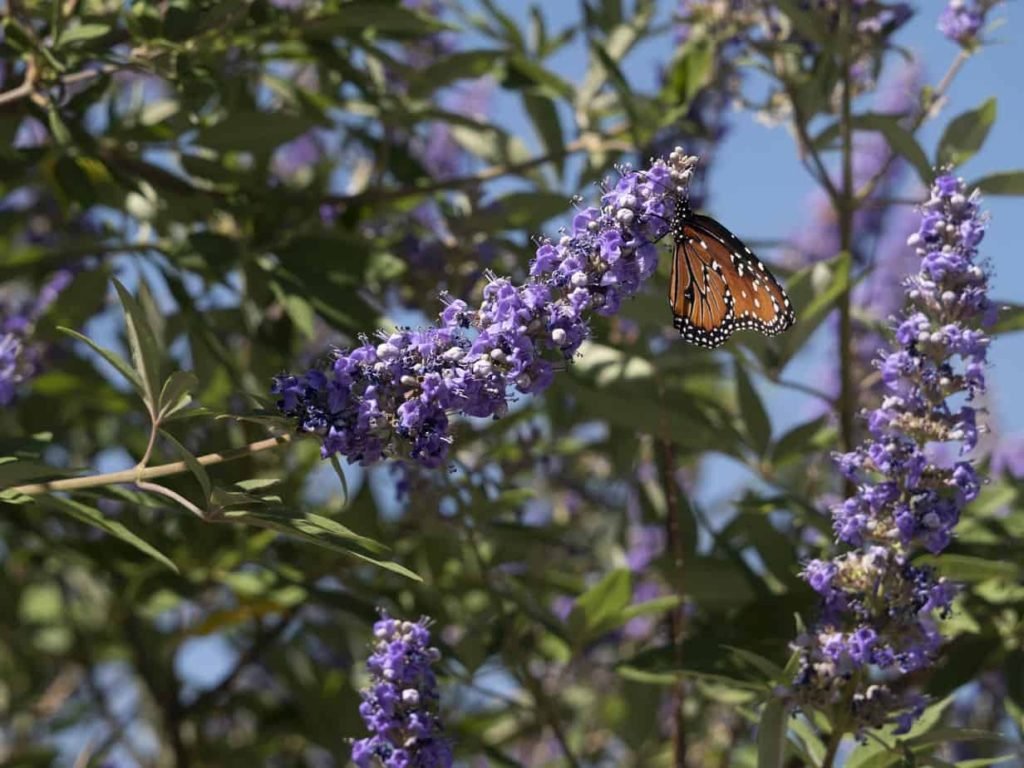
The Texas sage should be pruned lightly once a year. They attract butterflies and hummingbirds. Texas sage plants do best in dry soil and should not be overwatered as it may lead to root rot.
The Texas Mountain Laurel is a tree-like shrub that puts on multiple trunks. With proper pruning, the shrub can be trained into a small tree by removing the lower branches. Texas Mountain Laurel is an evergreen shrub or small tree with spring blooms in shades of blue to purple. They have a strong pleasant smell reminiscent of sweet grape soft drinks. The Texas Mountain Laurel is also known as Mountain Laurel, Mescal Bean, Mescal Bean Sophora, Frijolillo, Coral Bean, Big-drunk Bean, and Colorin.

The Texas Mountain Laurel bean pod is known to be poisonous. Encased in a very hard shell the danger is minimal but it would be wise to clip the pods off before they mature if you have small children or pets.
Wet Area Plantings
Another consideration for xeriscaping is the possibility of wet areas or muddy spots in your yard. These areas will need another approach by implementing thirsty plants, perhaps with a water garden area. Some Texas native varieties to consider for these areas are Texas sedge, cedar sedge, Texas frog fruit, Liriope, Pigsqueak, Marsh marigold, Northern blue flag, and plant creepers. Other species to consider are English ivy, Horse herb, Algerian ivy, Plum yew, Ajuga, Mondgrass, and Lyre leaf sage.
Native Texas Plants – Ornamental Grass Plants
Ornamental grasses make great borders and are generally pleasing to the eye for any landscape. They can be especially useful in xeriscapes adding an additional layer of textures, color, and aesthetic appeal.
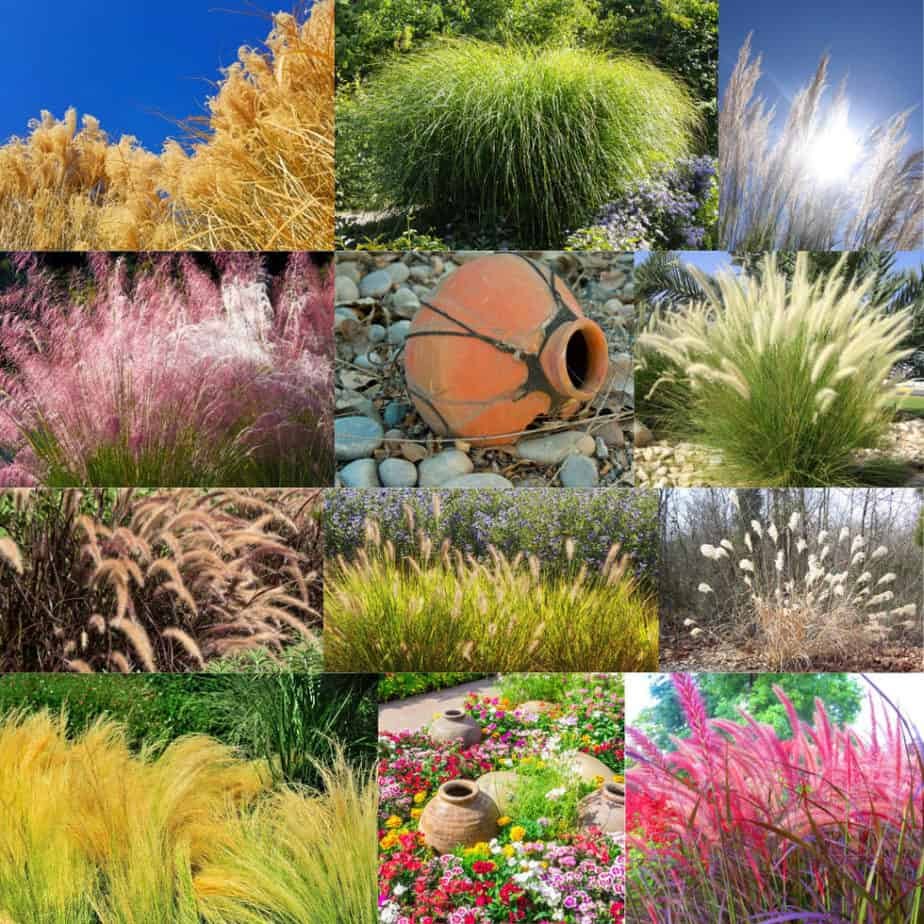
Most ornamental grasses are perennials and are either clumping or spreading grasses. Grasses should be cut back before the new seasons’ growth begins There are varieties of evergreen grasses such as sedges and sweet flags that should not be cut back, simply remove the dead leaves as needed.
Some outstanding Texas native ornamental grasses are Mexican feather grass, Purple fountain grass, Carex grass or sedge, Little bluestem, Indian grass, Prairie dropseed, Switchgrass, Island Sea Oats, and Blue Grama.
Other ornamental grasses for xeriscape are Muhly grass (in various purple, pink, and white colors), Blue Fescue, Japanese Forest Grass, Zebra Grass, and Bamboo grass (for muddy areas), as well as Japanese blood grass, among others.
Keep in mind some ornamental grasses may need more moisture so lower levels of your terrain are great spots for these types of plants. Be sure to check the zone recommendations for your specific area and choose the best low-water ornamental grasses available.
Fruits and Cactus in Xeriscape – Texas Native Plants
There are many native Cacti found in Texas, more than one hundred species, in fact. Texas Prickly pear, Yucca, Red Yucca, and Spanish Dagger among others, make great xeriscape options. Many will provide blooms and fruits depending on the time of year. If you have small children or animals the thorny variety might not work for you.
Spineless varieties of cacti are readily available and are hardy in both cold and hot climates. Nurseries carry many spineless varieties and some can be found on roadsides and other common areas. Barberry Fig cacti look similar to the prickly pear but are spineless. The flower blooms are orange and red. Be aware that some species of cacti are protected under state and federal laws (see list here).
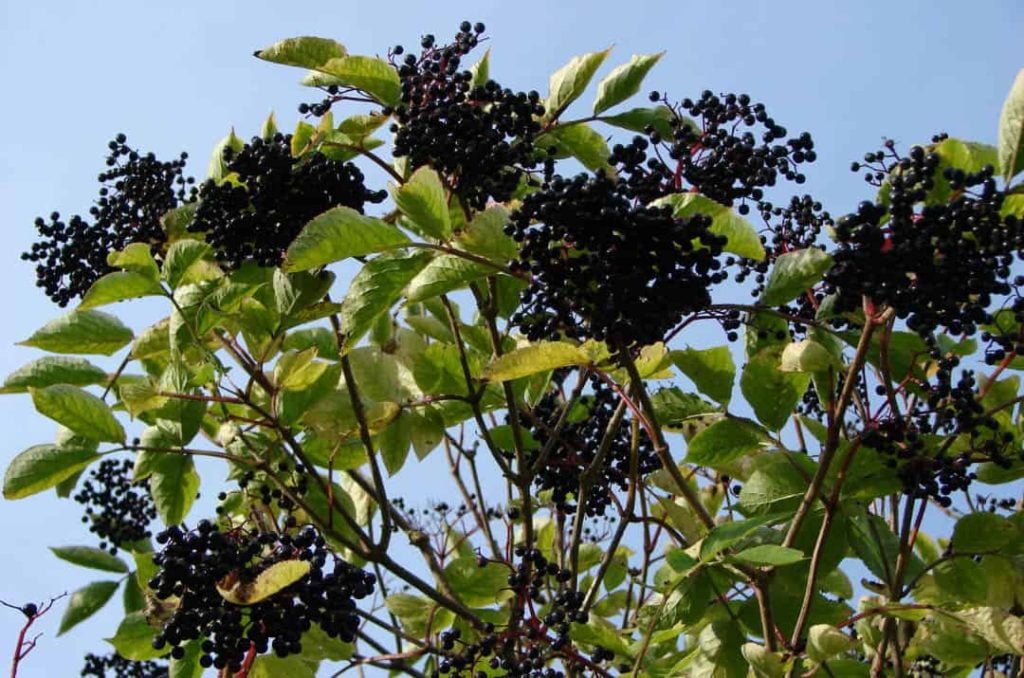
There are also many Texas native fruit-bearing plants such as mustang grapes, dewberry, Western mayhaw (hawthorn berries), pawpaw, Texas persimmon, several varieties of wild plums, prickly pear, Agarita, Red mulberry, Chickasaw plum, Southern crabapple, American persimmon, wild pear, several black cherry varieties, and chokecherry.
Elderberry native to Texas is known as Common Elderberry, Elderberry, American Elder, Sweet Elder, Pie Elder, and Elder-blow. They can be both medium to large shrubs and small to medium trees.
Even though not considered native to Texas, figs have a long history as one of our earliest plantings when settlers brought them to the Lone Star State. Varieties of figs that do well in Texas are Brown turkey, Texas everbearing, Black mission, Alma, Celeste, Kadota, and Blue giant. Figs love hot dry climates so do well in many areas of Texas and a select few are also cold-hardy.
Wild fruits are used to make wines, dried fruits, jellies, jams, pie filling, juice, fruit salsa, fruit relish, and other condiments. You can use them in puddings, sorbets, marmalades, preserves, and even cookies, as well as cakes. Dewberry is one of my personal favorites for delicious pies and they are abundant from April through May. Look for them along fence lines as they are a vining berry. They do have prickly thorns so lift them with a utensil and pick carefully.
Use fruits from wild plants with caution as some varieties of fruit-bearing plants can be poisonous. For xeriscapes, we recommend buying them from reputable garden and nursery stores. Know before you grow is always a word of caution when using wild vegetation.
Decorative Elements in Xeriscaping
Gravel, river rock, crushed red granite, pavers, bricks, railroad ties, driftwood or other aged woods, metals, lava rock, and wall stones are just a few landscaping materials you can use in your xeriscape design. Pots can add visual interest to your Xeriscape as well as birdhouses, garden sculptures, hummingbird feeders, strings of lights, birdbaths, sundials, yard fire pits or chiminea, and even a small water feature such as stacked pots.
Larger areas of interest could include lounging areas with a hammock and other seating. If you have a large space several well-placed conversational seating areas can be incorporated into your xeriscape design as well as decks. Potted plants can tie in existing porches and decks with your xeriscape design.
Perhaps a pergola, gazebo, or outdoor umbrellas can be incorporated as well. Solar lighting along walkways, wind chimes on decks or porches, rain gauges as well as other functional and decorative items are perfect additions to any Xeriscape design. Outdoor kitchen areas can easily be integrated into your Xeriscape design plan.

In Conclusion
In conclusion, there are hundreds of varieties of low-water-use plants suitable for xeriscapes. Many of those are Texas-native plants. Choose plants that provide both color and beauty to the landscape. Consider the function of your plantings with regard to terrain and design. Xeriscape landscaping incorporates common sense combined with the principles of using well-adapted plants and minimal irrigation, with the use of water-saving mulches and soils. Your Xeriscape should be well-planned to incorporate all the above.
Read about Texas agriculture and hemp production here.
Texas Native Plant Society has many resources here.
air fryer recipe areas in Texas areas of texas Austin Texas average cost of living in texas Bar-B-Cue Bar-B-Q Bar-B-Que barbecue barbeque bbq best cities in texas to raise a family best place to live in texas for families bowl of red budget-friendly meal cities in texas comfort food cost of living in texas easy appetizer easy dessert recipe easy dinner easy dinner recipe family dinner famous in texas Foods in Texas friendly people google texas county google texas news google texas roadhouse gulf of america leading texas lifestyle brand lifestyle brand local texas one-pot meal party food protein-rich meal Southern comfort food Southern cuisine Southern dessert Texas Texas Hill Country texas lifestyle brand Texas Panhandle Texini the leading Texas lifestyle brand weeknight dinner
Xeriscaping is a great alternative to traditional gardening in drought-stricken areas of Texas. When done correctly, native plants are used so that these landscapes don’t require supplemental water. Some common native Texas plants which can be used in xeriscaping include purple sage, Artesia, mesquite trees, broom dalea, horse herb, Spanish Dagger as well as the other ever-popular cactus species.
What to plant in pastures
Cacti of Texas
Cold Hardy Landscape Cacti & Succulents
Native Plant Society of Texas
Native and Adaptive Landscape Plants – an earthwise guide for Central Texas
Texan by Nature Native Plants
Texas Land Conservancy
Native Plants for Birds
Native Plants/Texas
Recent Posts
Over the July 4th weekend, Kerr County and surrounding areas in Central Texas were devastated by one of the deadliest floods in state history. In a matter of hours, the peaceful Guadalupe River...
As the summer sun blazes across the Texas plains in 2025, the Lone Star State finds itself at a pivotal cultural and political crossroads. Renowned for its fierce independence and larger-than-life...


